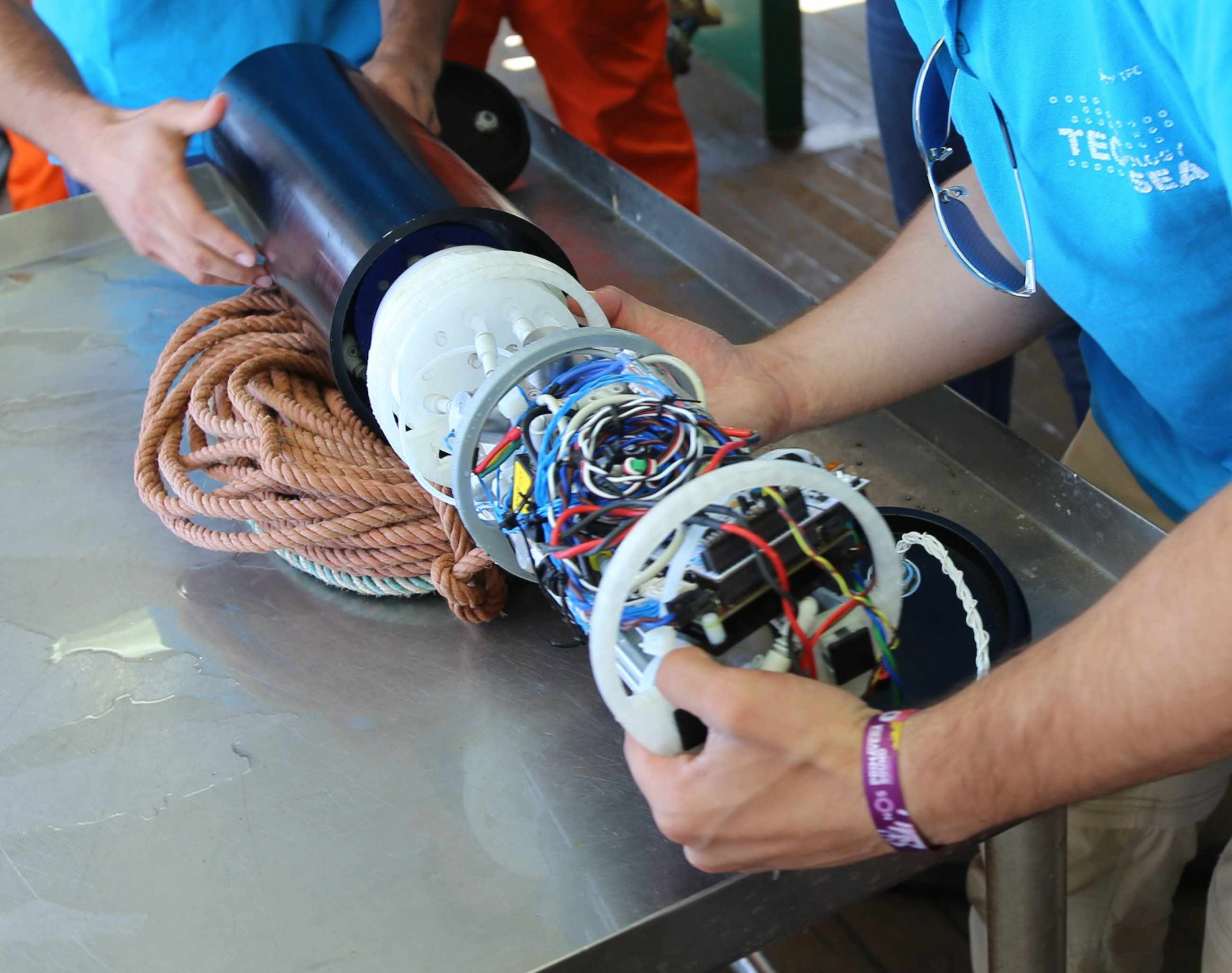INESC TEC and CIIMAR develop technology to monitor aquatic microorganisms
INESC TEC and CIIMAR developed an autonomous technology for monitoring, collecting and preserving the genetic material of the aquatic microorganisms almost immediately.
09th July 2019
For what purpose? To use these biological samples in comprehensive studies on the diversity and composition of the planktonic communities through the use of new technologies for the analysis of their genetic material. The researchers responsible for the development of this autonomous biosampler have recently published these developments on the scientific journal PLOS ONE. This prototype was developed and validated by INESC TEC and CIIMAR’s researchers under the projects MarinEye, Coral and MarRisk.
Climate changes and the runoff of nutrients and pollutants greatly affect the equilibrium of natural microbial communities and compromise the ecosystem's health like the aquatic ones, among others. The planktonic microbial communities play an important role in the response to climate changes and to anthropogenic impacts, having direct consequences in the water quality, fisheries regulation and management of the water masses.
The planktonic microbial communities are crucial for several natural processes of the aquatic ecosystems, including the control of nutrient availability, degradation and recycling of anthropogenic organic and inorganic contaminants. However, the effects of climate changes and the runoff of nutrients and pollutants can promote the occurrence of pathogens or microbial toxin producers. These factors affect the equilibrium of natural microbial communities and compromise the entire ecosystem status. In this context, the improvement of the microbial plankton monitoring is essential to understand how these communities respond to environmental changes related to the effects of climate changes or to the runoff of nutrients and pollutants.
The collection of these types of samples involves, so far, expensive and time-consuming sampling procedures, which can limit the frequency of which sampling and data collection can be made. It also promotes the deterioration of the sample, thus increasing the risk of potential contamination due to the storage time. The biosampler, which was developed by biologists from CIIMAR-UP and engineers from INESC TEC, is autonomous and it’ll be able to improve the temporal and spatial resolution of biological monitoring in different aquatic environments.
Alfredo Martins, researcher from INESC TEC’s Centre for Robotics and Autonomous Systems and one of the people responsible for this study, indicates the advantages of the autonomous biosampler that was developed: “We believe that the successful development of this prototype of autonomous sampling of aquatic microbiomes, which is the result of a multidisciplinary collaboration between INESC TEC and CIIMAR, will solve multiple limitations associated with manual collection and therefore will foster the biological monitoring on a broad temporal and spatial scale, thus reducing costs and increasing its efficiency.”
Another significant advantage of the developed biosampler is to minimise artefacts associated with sample handling, maximizing sterile conditions and enabling almost immediate preservation of the genetic material of biological samples. In addition to this, by integrating the biosampler in fixed or mobile water observation systems, it’ll be possible to substantially increase the biological monitoring ability through large-scale temporal studies of microbial communities' diversity and functions.
INESC TEC’s researchers mentioned in this news piece are associated with IPP-ISEP.


